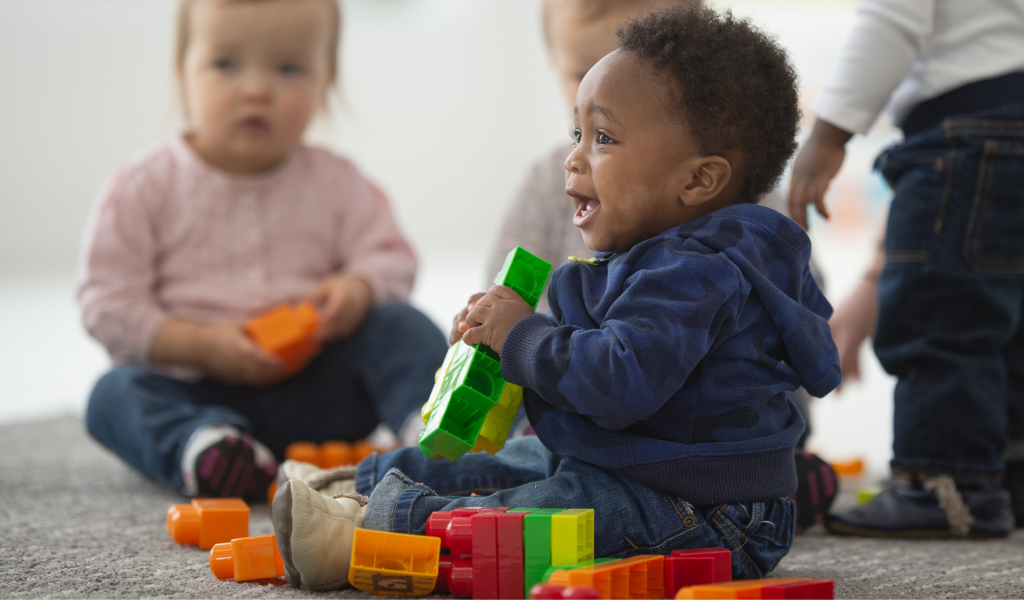In this free CPD blog, Ruth Swailes explores our expectations for children in the Early Years:
I often observe people on social media asking questions about what other practitioners’ children can do at different times of the year, and what others’ expectations are. It’s understandable that in a world where we are rightly held to account for children’s progress and attainment, practitioners want to make sure that they are getting things right and so they naturally seek out support from those in similar situations. Perhaps the most difficult thing to do, especially early on in a career in early childhood, is to pitch the curriculum at the right level for the children.
It feels like everyone has an opinion about what we should be doing with children when, and I think it’s important to listen to a range of voices but to always remember that not everyone who is sharing their opinions has worked in the Early Years, nor do they necessarily have a secure understanding of child development. For me, this is one of the most important factors in ensuring that the curriculum we provide for our youngest children really meets their needs.
“Leaders adopt or construct a curriculum that is ambitious and designed to give children, particularly disadvantaged (including those with SEND), the knowledge, self-belief and cultural capital they need to succeed in life.” (paragraph 418, Ofsted handbook)
But what does this mean? Whose ambition? The adult’s or the child’s? What is ambitious for one child may not be ambitious for all children. Who decides whether the level of ambition is correct? Is it the inspector who is visiting for just a day or maybe two, who doesn’t know the children and who may not have any experience of working with under 11s, let alone under 5s? Or is it the practitioner who works with these children every day?
Psst! Want to understand what Cultural capital is? Read our blog on this topic here.
The concept of “ambition” in the curriculum is something Julie Fisher explores in her most recent edition of “Starting from the child?” (Open University press 2024) In chapter seven she explores this idea in depth and states;
“The ambition is down to those who create the curriculum, who deliver it and who assess it.”
One of the problems this can lead to is that if the people involved in creating the curriculum don’t have a secure understanding of broadly typical development for young children, they may mistake inappropriate content for ambition. The temptation can be to introduce things which usually occur in Years One and Two into Reception, to introduce Reception content into Nursery and to introduce Nursery practice and content into the two-year-old room and so- forth. To the untrained eye, this could appear to be, “ambitious” but it will not be meaningful to the children if they haven’t got the underpinning skills, knowledge and understanding to access the learning we are presenting them with.
Derbyshire et al (2014) identify that decontextualised teaching, which is unsympathetic of children’s experiences can be inaccessible and can undermine the child’s unique abilities. If the child has no prior experience to relate learning to, and lacks the necessary skills to be able to access what it is we are trying to teach them, there is a disconnect and it is highly unlikely the child will succeed, or recall the things we are trying to teach them.

So, how do we ensure that we are “ambitious” for our children, but that we provide the right things at the right time? The starting point is a secure understanding of how young children learn and develop. Children don’t come with a manual, as my colleague Dr Sue Allingham often says, “All child development is made up.” By that she means that what we understand to be typical behaviour is broadly based on our observations, research and knowledge gathered over many years observing and working with young children. Thus we can state that typically young children usually use their first few words between the ages of 10 and 20 months . But we can’t state that every child will do this, or that it will happen on the day that the child is 11 months old. This is not an exact science. Of course, we learn more about child development every year and this helps to shape our thinking about how to support our youngest children.
We need to understand when most children start to develop key skills and plan to develop their knowledge and understanding based on this knowledge, but also on our understanding of each child as a unique individual person whose needs we must meet. Ambition will look different for every child within our care. It is important to know and consider the key skills and knowledge we want to give children while they are with us, but to view this through the lens of the unique child, developing at different rates in our enabling environment through our positive relationships. Then we can be truly “ambitious” for all.

References
Derbyshire,n. Finn, B., Griggs, S., and Ford, C. An unsure start for young children in English urban primary schools . Urban Review 46. P816-830
Fisher, J. Starting from the child? Fifth edition, Open University Press 2024
Ofsted handbook April 2024

About the author
Ruth Swailes has more than 25 years’ experience in primary education, over 20 of them in senior leadership roles including primary headship. She’s also a trained Ofsted inspector, School Improvement Advisor and lead developer of the Oxford International Early Years Curriculum with Oxford University Press. She was the winner of the Nursery World Trainer of the Year award 2021.